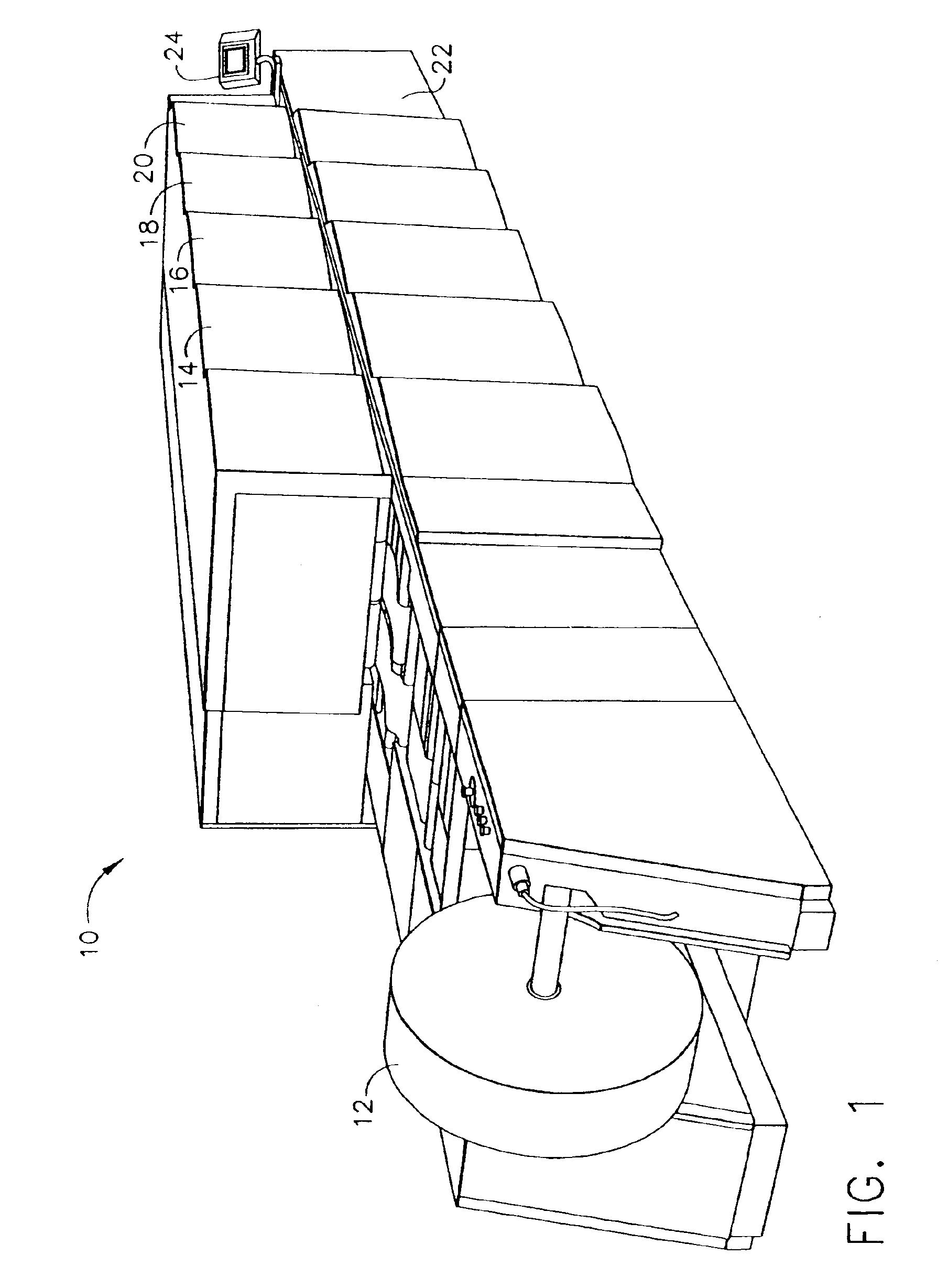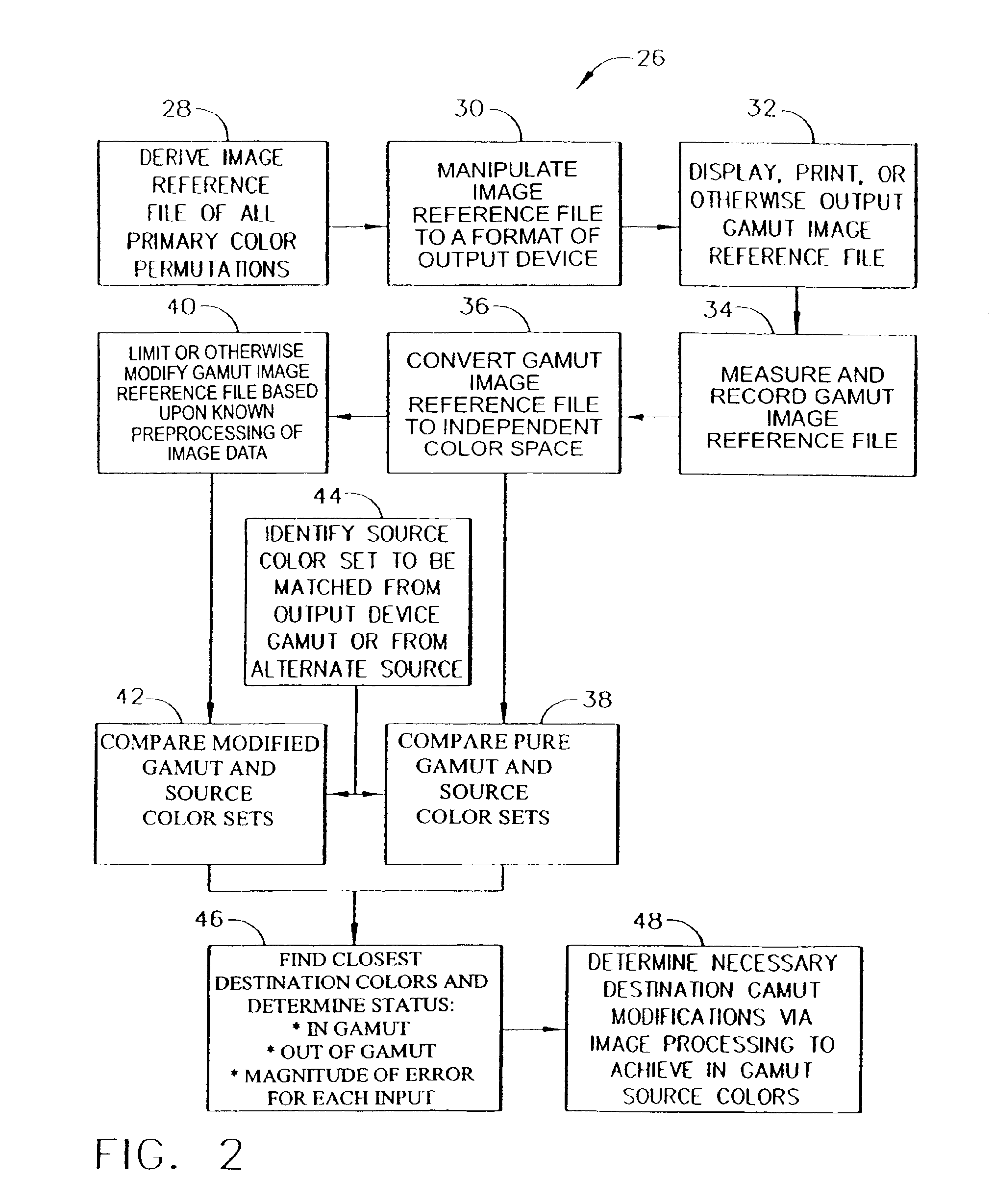Color cross reference selection system and method
- Summary
- Abstract
- Description
- Claims
- Application Information
AI Technical Summary
Problems solved by technology
Method used
Image
Examples
Embodiment Construction
[0015]The present invention discloses the printing of all possible colors, including all permutations of primary inks used to make processed colors, in equal increments and of a size easily measurable with a device that will convert the colors into standard color coordinates. These colors are categorized and used to determine the ability of the output device to reproduce a source color. Each color printed within the gamut of an output device is identified, via a unique label, and correlated to independent color coordinates. The primary color recipe necessary to reproduce a reference color within the gamut of the output device is identified, using color coordinates and the unique label to categorize the colors. The magnitude of deviation of out of gamut source colors is determined, and the closest in gamut colors are specified through methods of interpolation and nearest neighbor. Furthermore, the alteration in gamut size can be predicted based upon image manipulation processes assoc...
PUM
 Login to view more
Login to view more Abstract
Description
Claims
Application Information
 Login to view more
Login to view more - R&D Engineer
- R&D Manager
- IP Professional
- Industry Leading Data Capabilities
- Powerful AI technology
- Patent DNA Extraction
Browse by: Latest US Patents, China's latest patents, Technical Efficacy Thesaurus, Application Domain, Technology Topic.
© 2024 PatSnap. All rights reserved.Legal|Privacy policy|Modern Slavery Act Transparency Statement|Sitemap



